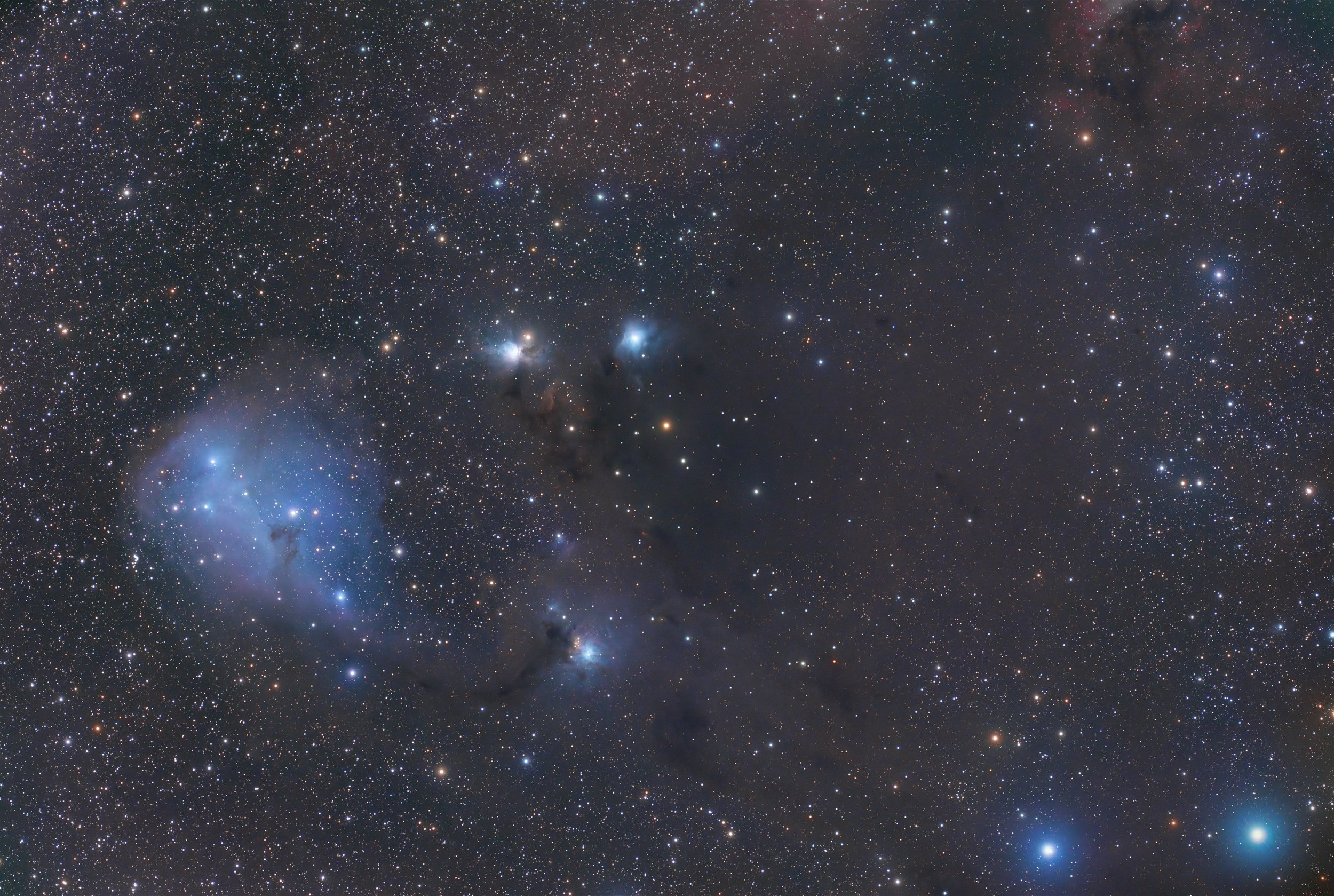
AAPOD2 Image Archives
The Horsehead Nebula
The Horsehead Nebula (Barnard 33) is a striking dark nebula located approximately 1,375 light-years away in the constellation Orion. It appears as a distinctive silhouette against the vibrant glow of IC 434, a bright emission nebula illuminated by the nearby star Sigma Orionis. The nebula’s famous horse-like shape is the result of a dense region of cold gas and dust that blocks the background hydrogen-alpha (Hα) light emitted by IC 434.
Revealed in this image is the delicate interface where ionized hydrogen meets dense molecular gas at the Horsehead’s edge. This boundary region, shaped by intense radiation from nearby young stars, is a site of active star formation, adding another dimension to this iconic cosmic landscape.
A Journey on Horseback: Barndar33 Horsehead Nebula
The Horsehead Nebula (Barnard 33), located in the Orion constellation approximately 1,500 light-years away, is a captivating dark nebula renowned for its distinct silhouette resembling a horse's head against the vibrant background of IC 434. This image was captured using the SHO (Sulfur-II, Hydrogen-alpha, Oxygen-III) narrowband palette, offering a unique perspective of this iconic region by mapping specific ionized gases to distinct colors.
The SHO technique highlights Sulfur-II emissions in red, Hydrogen-alpha in green, and Oxygen-III in blue, which provides insights beyond traditional broadband imaging. This method reveals lesser-known details, such as the intricate structures of ionization fronts and shock waves from nearby stellar winds. The blue hues in the image, corresponding to Oxygen-III, often trace the hotter, ionized regions around young, massive stars, while the reddish areas dominated by Sulfur-II can indicate regions of low-energy ionization, often associated with older stellar remnants or slower-moving ionized fronts. The green hydrogen-alpha emissions not only enhance the iconic glow of IC 434 but also bring out subtle textures in the surrounding molecular clouds, offering a deeper understanding of the chemical processes and star formation activities within this complex and beautiful region.



